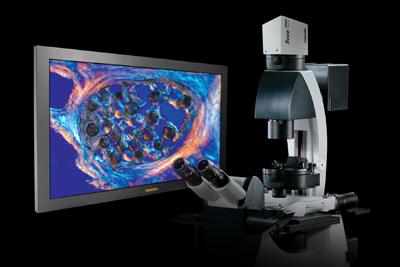Single-Camera 3D Microscope Eases Fatigue
April 13, 2012

Engineers, lab scientists, and medical workers who must view magnified 3D images produced with two different cameras for long periods of time typically suffer from eye fatigue and other discomfort. A single-lens 3D microscope imaging system aims to eliminate that.
A lot of 3D video, especially in industrial machine vision, is created with two different cameras, because this system is less expensive, easier to set up, or both. Multiple 2D cameras are positioned around objects on an assembly line and synchronized with triggering devices, producing stereo images. But viewing 3D images produced with two cameras gives many people eye problems and headaches, because parallax prevents the images from aligning perfectly.

ISee3D has invented single-lens/single-camera 3D technology for improving stereoscopic 3D vision. It has formed a partnership with Toshiba Imaging, which is known for its CCD image sensors that produce high-quality, high-definition color video. These sensors are still used in high-end applications such as machine vision and are different from the somewhat lower-quality, high-volume, less expensive CMOS sensors in cellphone cameras and laptops.
The ISee3D single-camera microscope digital video system produces carefully aligned, perfectly matched images. The fact that the system can project those images on a high-definition monitor makes the viewing of 3D images even easier. The two companies displayed the microscope/monitor imaging system recently at the Pan Pacific Hotel in Vancouver.
About the Author(s)
You May Also Like
.jpg?width=300&auto=webp&quality=80&disable=upscale)


